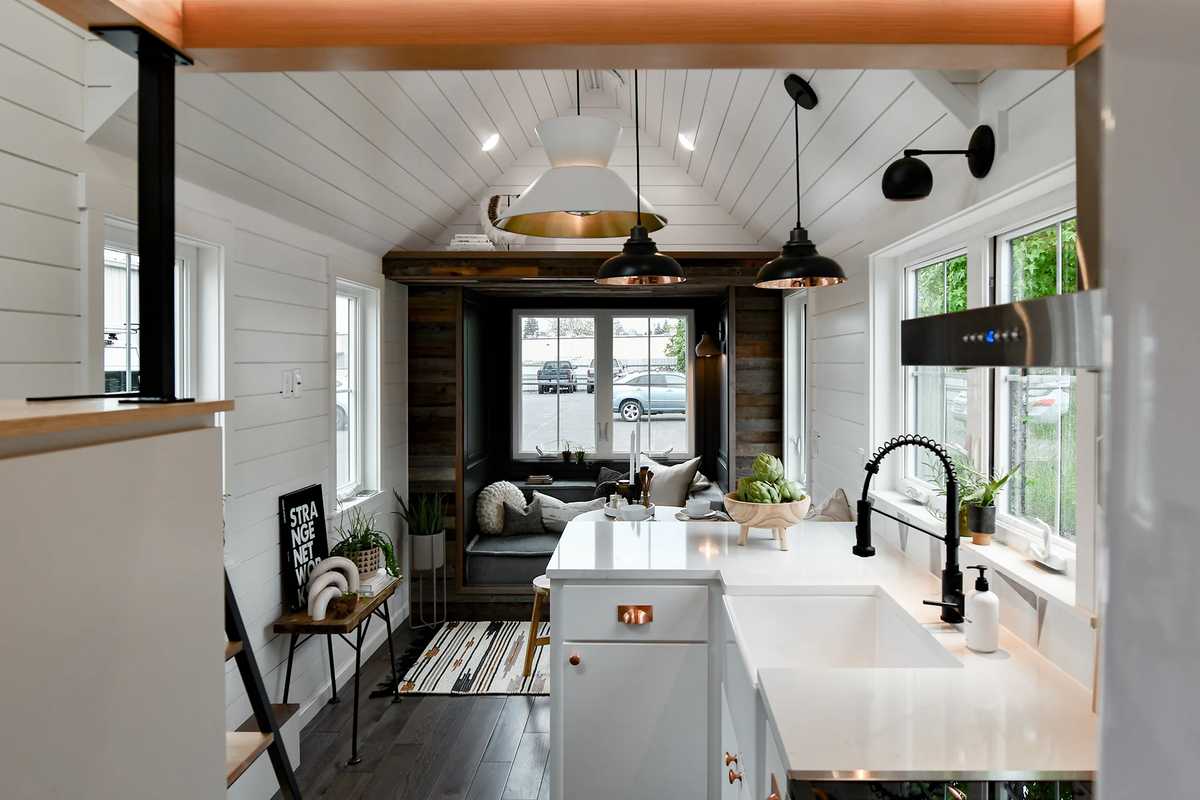What You Should Know about the Kootenay Contemporary Style
The Kootenay Contemporary building style is an architectural approach that merges modern design principles with the unique environmental and cultural context of the Kootenay region in British Columbia, Canada.
This style is characterized by its integration with the natural landscape, sustainable building practices, and a blend of rustic and modern aesthetics.
In this article, we’re going to delve into the technical aspects of the Kootenay Contemporary architecture and highlight its defining features, construction techniques, and material usage.
Design Principles and Aesthetics
The Kootenay Contemporary architecture emphasizes a seamless connection between the built environment and nature. This is achieved through large, expansive windows that provide unobstructed views of the surrounding landscapes, open floor plans that promote fluid movement between indoor and outdoor spaces, and the use of natural materials such as wood and stone.
The design prioritizes simplicity, functionality, and a minimalist aesthetic, while also incorporating elements that reflect the local culture and heritage.
Its key design elements include the following:
- Open Floor Plans – These create a sense of spaciousness and allow for flexible use of interior spaces.
- Large Windows and Glass Doors – These maximize natural light, enhance energy efficiency, and provide a strong visual connection to the outdoors.
- Natural Materials – The use of locally sourced timber, stone, and other materials reduces environmental impact and helps buildings blend into the landscape.
- Flat or Low-Pitched Roofs – These contribute to the modern aesthetic and often support green roofs or solar panels, aligning with sustainable building practices.
Sustainable Building Practices
Sustainability is a cornerstone of the Kootenay Contemporary style. The buildings are designed to minimize their environmental footprint through energy-efficient systems, renewable energy sources, and sustainable materials.
Here are its key benefits:
- Energy Efficiency – High-performance insulation, triple-glazed windows, and airtight building envelopes are standard to reduce heating and cooling demands. Passive solar design principles are often employed, where buildings are oriented and designed to maximize natural heating and lighting.
- Renewable Energy – Many Kootenay Contemporary homes incorporate renewable energy systems such as solar panels and geothermal heating. These systems are designed to reduce reliance on fossil fuels and lower greenhouse gas emissions.
- Water Conservation – Rainwater harvesting systems, low-flow fixtures, and native landscaping reduce water usage and promote sustainability. Greywater recycling systems are also sometimes used to further minimize water waste.
- Green Building Materials – Preference is given to materials that are renewable, recycled, or have a low environmental impact. For example, bamboo flooring, recycled steel, and reclaimed wood are common choices.
Construction Techniques
Building in the Kootenay Contemporary style requires specific construction techniques to ensure durability, energy efficiency, and harmony with the environment.
It uses the advanced framing method to reduce the amount of lumber used and increase insulation space which can improve energy efficiency as a result. It involves the use of 2×6 studs spaced 24 inches apart, rather than the traditional 2×4 studs spaced 16 inches apart.
SIPs are used for walls, roofs, and floors. These panels consist of an insulating foam core sandwiched between two structural facings, usually oriented strand board (OSB). SIPs provide superior insulation and structural strength.
Moreover, many components are prefabricated off-site to ensure precision and reduce construction waste. Prefabricated elements can include wall panels, roof trusses, and even entire room modules.
Integration with the Landscape
One of the defining features of the Kootenay Contemporary style is its integration with the natural landscape. This involves careful site selection and planning to minimize environmental impact and enhance the building’s connection to its surroundings.
Some of the key techniques include:
- Minimal Site Disturbance – Construction is planned to minimize grading and tree removal. Buildings are often sited to take advantage of natural topography and vegetation.
- Native Landscaping – The use of native plants in landscaping reduces water needs and supports local biodiversity. Landscaping is designed to blend seamlessly with the natural environment.
- Natural Drainage Systems – Permeable paving, bioswales, and other natural drainage systems are used to manage stormwater runoff and reduce the impact on local waterways.
The Bottom Line
The Kootenay Contemporary building style represents a harmonious blend of modern design, sustainability, and regional identity.
By incorporating advanced construction techniques, energy-efficient systems, and natural materials, this style not only meets the aesthetic and functional needs of its inhabitants but also respects and preserves the natural environment.
As interest in sustainable living grows, the principles and practices of Kootenay Contemporary architecture offer valuable insights into the future of residential design.

Leave a Reply